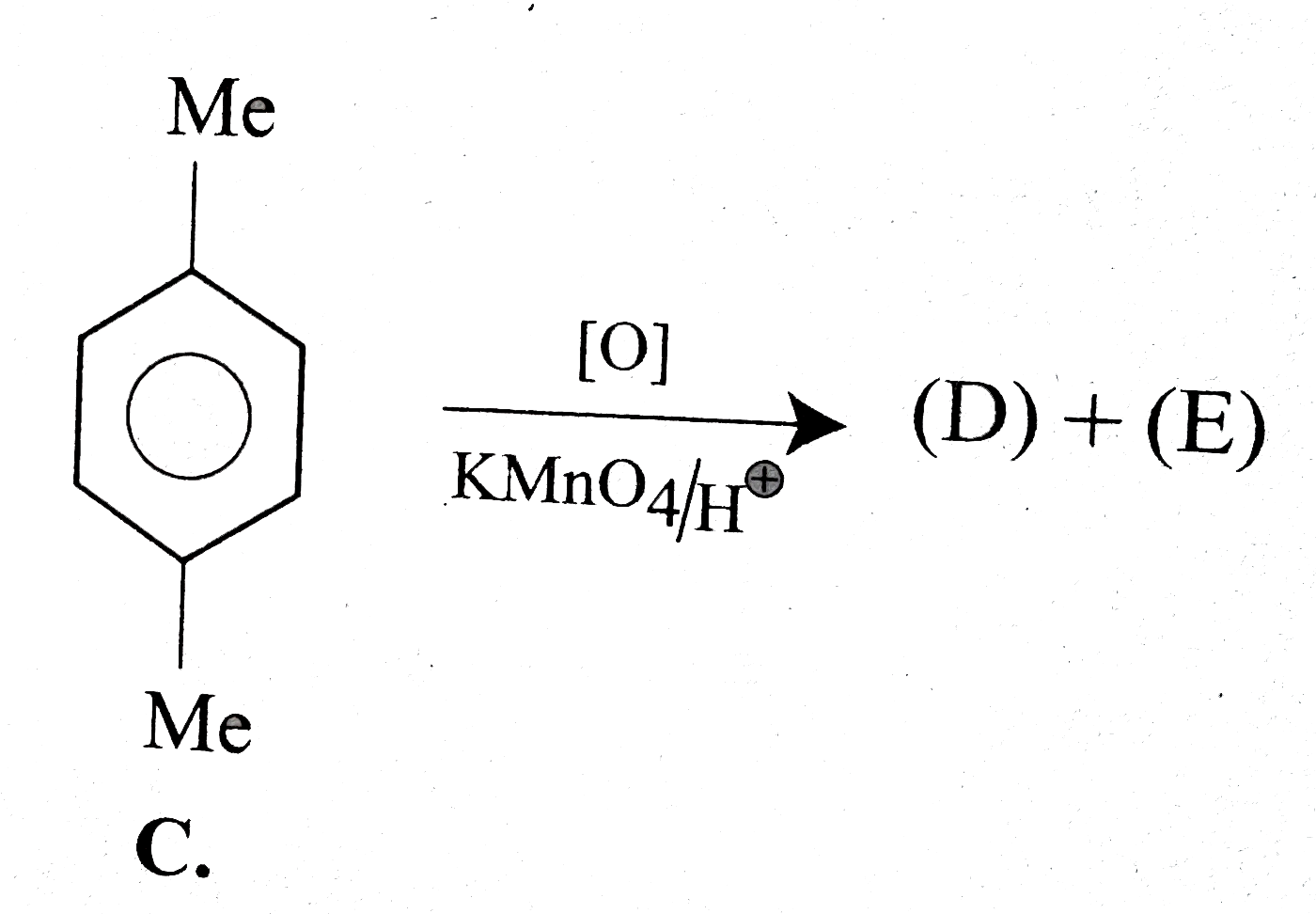
The compound E is
CO
CO2
C3O2
Oxide of metal
Step by step video & image solution for The compound E is by Chemistry experts to help you in doubts & scoring excellent marks in Class 12 exams.
Updated on:21/07/2023Topper's Solved these Questions
- p-BLOCK ELEMENTS-1BOOK - VMC MODULES ENGLISHCHAPTER - p-BLOCK ELEMENTS-1EXERCISE - JEE Main Archive
34 Videos
- p-BLOCK ELEMENTS-1BOOK - VMC MODULES ENGLISHCHAPTER - p-BLOCK ELEMENTS-1EXERCISE - JEE Advanced Archive
48 Videos
- p-BLOCK ELEMENTS-1BOOK - VMC MODULES ENGLISHCHAPTER - p-BLOCK ELEMENTS-1EXERCISE - LEVEL 1
75 Videos
- MOCK TEST 9BOOK - VMC MODULES ENGLISHCHAPTER - MOCK TEST 9EXERCISE - CHEMISTRY (SECTION 2)
5 Videos
- PERIODIC PROPERTIES OF ELEMENTSBOOK - VMC MODULES ENGLISHCHAPTER - PERIODIC PROPERTIES OF ELEMENTSEXERCISE - IMPECCABLE
50 Videos
Similar Questions
Consider the following reaction :
 ,
,
 .
.
The compound D is an ortho-isomer and E is a p−isomer.ThecompoundsDandE, respectively, are :
View SolutionAn organic compound A (C2H6O) reacts with sodium to form a compound B with the evolution of H2 and gives a yellow compound C on reacting with iodine and NaOH. When heated with conc. H2SO4 at 413 K, it gives a compound D (C4H10O) which on reaction wiht conc. HI at 373 K gives compound E. The compound D is also obtained when B is heated with E. Idntify the compounds A,B,C,D and E write the equations for the reaction involved.
View SolutionIdentify (A) to (E).
(a) An inorganic iodide (A) on heating with a solution of KOH gives a gas (B) and the solution of a compound (C).
(b) The gas (B) on ignition air gives a compound (D) and water.
( C) Copper sulphate is reduced to the metal on passing (B) through the solution.
(d) A precipitate of the compound (E) is formed on reaction of (C) with copper sulphate solution.
View SolutionThe compound C8H9Cl(A) on treatments with KCN followed by hydrolysis gives C9H10O2(B).Ammonium salt of B on dry distillation yields C.Which reacts with alkaline solution of bromine to gives C8H11N.(D)Another compound E is obtained by the action of nitrous acid on D. E on oxidation gives F which gives the inner anhydride G on heating. The Compound A is :
View Solution(i) An aqueous solution of a compound A is acidic towards litmus and A sublimes at about 300∘C
(ii) A solution of A, on treatment with an excess of NH4SCN, gives a red compound, and on treatment with a solution of K4[Fe(CN)6], gives a blue compound.
(iii) The solid A, on being heated with an excess of K2Cr2O7 in the presence of concentrated H2SO4, evolves deep red vapours of D.
(iv) On passing the vapours of D into a solution of NaOH and then adding the solution of acetic acid and lead acetate, a yellow precipitate of a compound E is obtained.
Q. Can compound A be prepared in the anhydrous form by strongly heating its hydrated crystals?
View SolutionWhich hydrogen in compound (E) is easily replaceable during bromination reaction in presence of light ?

View SolutionWhich hydrogen in compound (E) is easily replaceable during bromination reaction in presence of light ?
CH3δ−CH2γ−CHβ=CH2α(E)
View SolutionAn organic compound (A) C4H9Cl on reacting with aqueous KOH gives (B) and on reaction with alcoholic KOH gives (C ), which is also formed on passing the vapours of (B) over the heated copper. The compound (C ) readily decolourises bromine water. Ozonolysis of (C ) gives two compounds (D) and (E ). Compound (D) reacts with NH2OH to give (F) and compound (E ) reacts with NaOH to have an alcohol (G) and sodium salt (H) of an acid. (D) can also be prepared form propyne on treatment with water in the presence of Hg2+ and H2SO4. Identify (A) to (H) with proper reasoning.
View SolutionAn organic compound (A)(C5H8O3) on heating with soda lime gives (B) which reacts with HCN to give (C). The compound (C) reacts with thionyl chloride to produce (D) which on reaction with KCN gives a compound (E). Alkaline hydrolysis of (E) gives a salt (F) which on heating with soda lime produces n−butane. Careful oxidation of (A) with dichromate give acetic acid and malonic acid. Give the structures to (A) to (F) with proper reasoning.
View Solution(i)A black coloured compound (B) is formed on passing H2S through the solution of a compound (A) in NH4OH
(ii)(B) on treatment with HCl and potassium chlorate or aquaregia gives (A)
(iii)(A) on treatment with KCN gives a buff/reddish-brown coloured precipitate which dissolves in excess of this reagent forming a compound (C).
(iv)The compound (C) is changed into a compound (D) when its aqueous solution is boiled in air.
(v)The solution of (A) was treated with excess of NaHCO3 & then with bromine water. On cooling & shaking for some time, a green colour of compound (E) is formed.No change is observed on heating.
Identify (A) to (E) and give chemical equations.
View Solution
